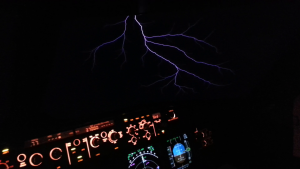Reviews
User Score
Rate This
Descriptions:
3/7/2010 – BAGRAM AIRFIELD, Afghanistan — Airmen assigned to the 455th Expeditionary Maintenance Group were some of the first responders on the scene after an Airbus A300 crew performed an emergency landing here March 1, 2010.
The aircraft, contracted to DHL International, was carrying mail and cargo when an unsafe gear indicator alerted the crew to a problem. The crew touched down after a visual inspection by tower personnel to ensure the landing gear was extended. Upon landing, the main landing gear collapsed and the aircraft slid to a stop between the runway and a taxi area.
"We were actually accomplishing some work on the flightline when the incident occurred," said Tech. Sgt. Alexander Figliola, 455th EMXG, crash and recovery. "A call came over the radio for an in-flight emergency notification system for all emergency responders to come to the flightline."
Sergeant Figliola, deployed from Royal Air Force Lakenheath, England, said as the aircraft touched down it appeared to be alright, but as it settled on the ground and slowed its airspeed, the left side landing gear collapsed and the aircraft began to slide down the runway. He said it finally came to a stop between the runway and a taxiway.
"We were cleared on the runway so we all rushed to the scene not really knowing what to expect," Sergeant Figliola said. "When we arrived at the aircraft, people were sliding down the emergency slide and the fire department was putting out a small fire around the engine. We were relieved because the situation could have been much worse."
Once the scene had calmed, Sergeant Figliola’s team began to assess damage to the aircraft and airfield. They also discussed how to move the large aircraft and restore air traffic to one of the busiest flightlines in the world.
"As soon as we saw that everyone was alright, we automatically started discussing the location and what we were going to need to get the aircraft out of the way," he added. "We knew that we had a lot of prep work ahead of us. We began to coordinate with other units on base to get the heavy equipment and supplies needed to get it out of the way."
Sergeant Figliola explained the primary mission of crash and recovery is to respond to incidents of this nature and assess damage to aircraft. They also remove damaged aircraft. This particular incident provided unique challenges because although the team is trained on all air frames, their primary mission had been fighter aircraft. They needed to make adjustments to compensate for the size, weight and location of the aircraft, and the weather.
"Weather was one of the key factors to how we were going to move the plane," said Sergeant Figliola, a Beverly Hills, Fla. native. "It was raining and the ground was pretty soft, that along with the weight of the aircraft that was still loaded with cargo and fuel made it pretty messy."
The crash and recovery team, with help from the 455th Expeditionary Civil Engineer Squadron, the U.S. Army, and members of other 455th EMXG flights used a 120-ton civilian contracted crane to raise the left wing of the aircraft, he explained.
Sergeant Figliola said once the left wing was raised, a 40-foot flatbed trailer substituted as the left side landing gear and a Heavy Expanded Mobile Tactical Truck, normally used to tow up armored vehicles and heavy equipment, pulled the aircraft approximately 100 feet to a taxiway parallel to the active runway.
Lt. Col. Jacqueline Mongeon, 455th EMXG deputy commander explained, "Our crash and recovery team responds to all in-flight emergencies to ensure the safety of the aircrew and the aircraft while also ensuring runway operability."







